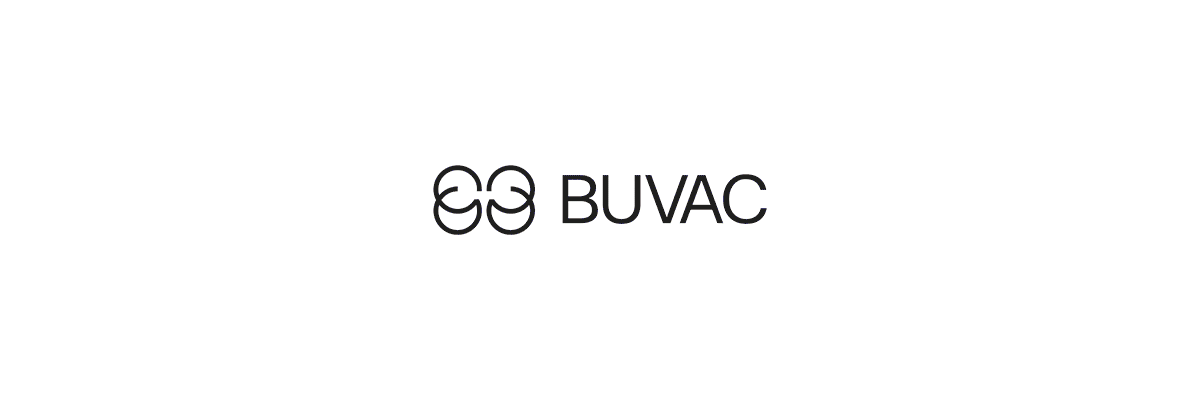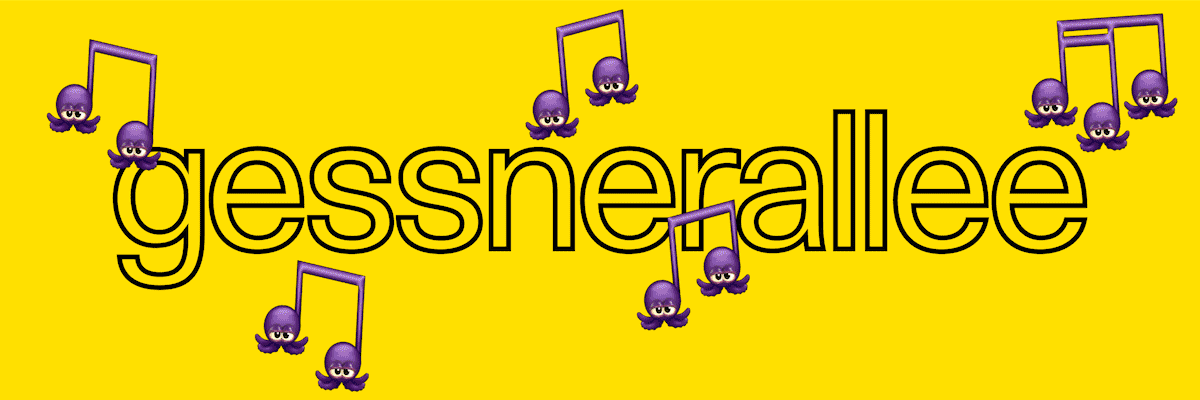
Line Lyhne
A Fussiness Inside

Line Lyhne. ‘A Fussiness Inside‘, Installation view
Advertisement
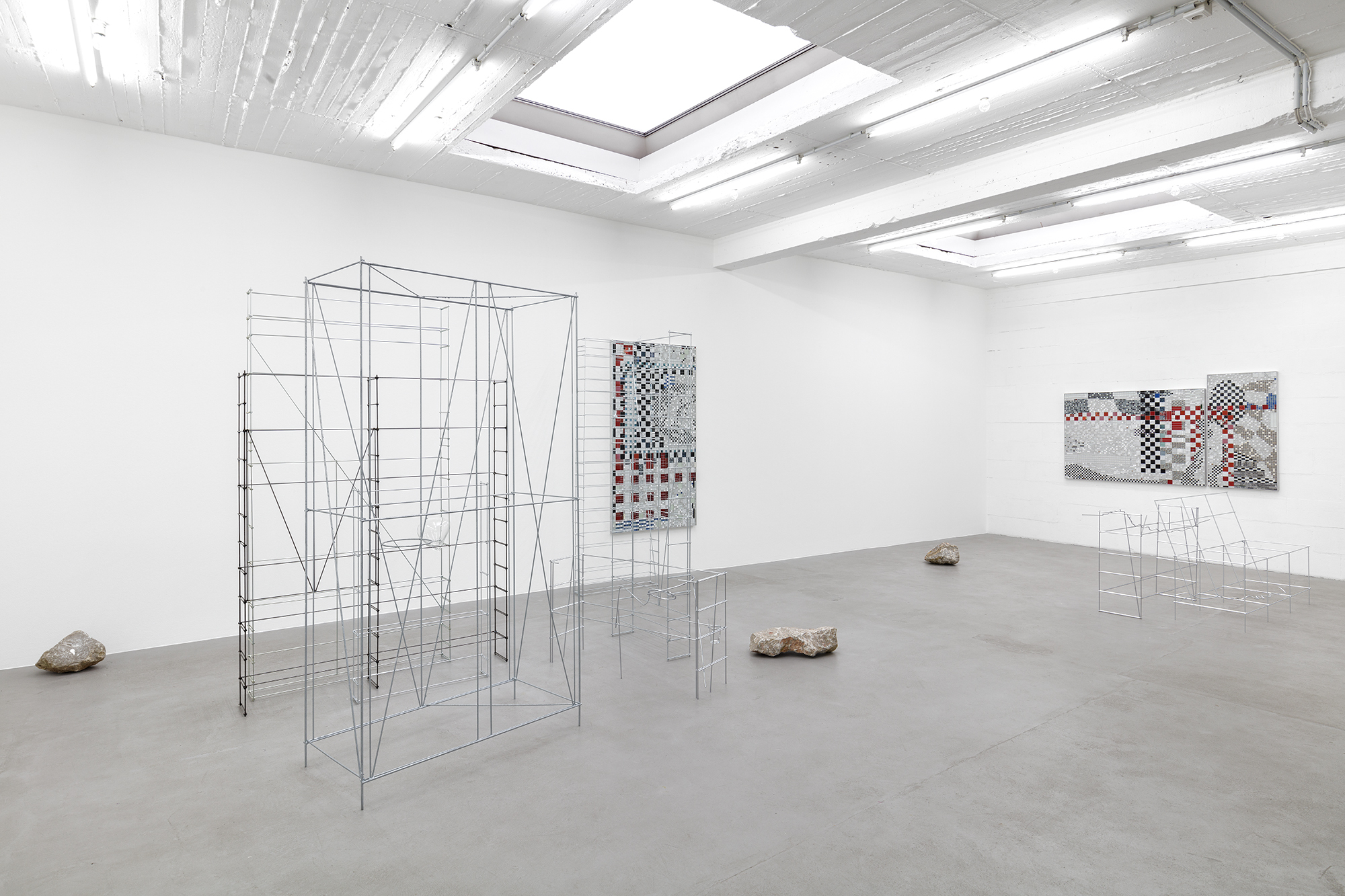
Line Lyhne. ‘A Fussiness Inside‘, Installation view

Line Lyhne ‘Supposing she was ready‘ (2024) Relief; mixed tiles, aluminum frame.

Line Lyhne ‘Went away to stay‘ (2024) relief; mixed tiles, aluminum frame.

Line Lyhne, ‘A Fussiness Inside‘ Installation view
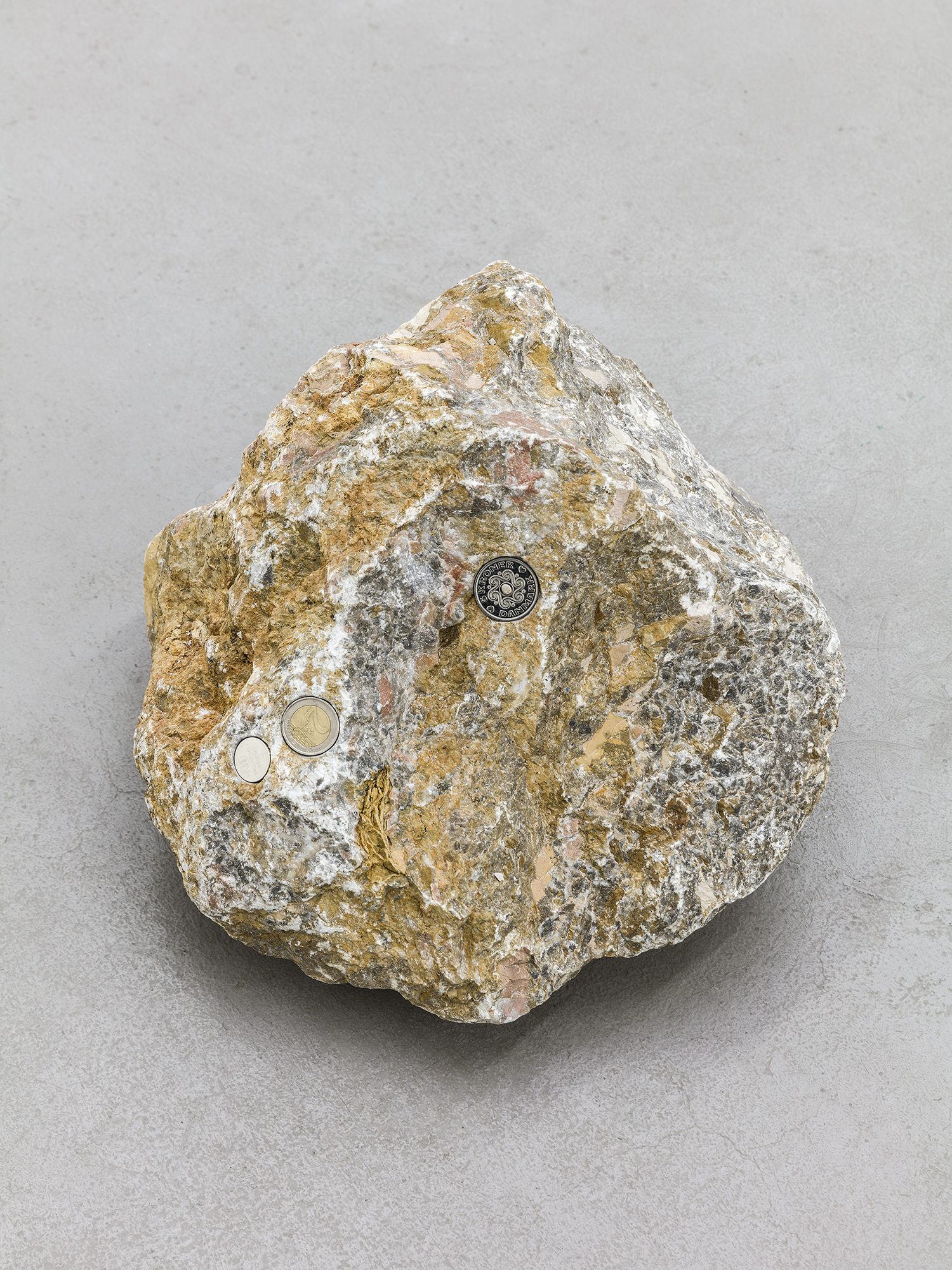
Line Lyhne ‘Entanglements‘ (2024) sandstone, coins, batteries, keys.
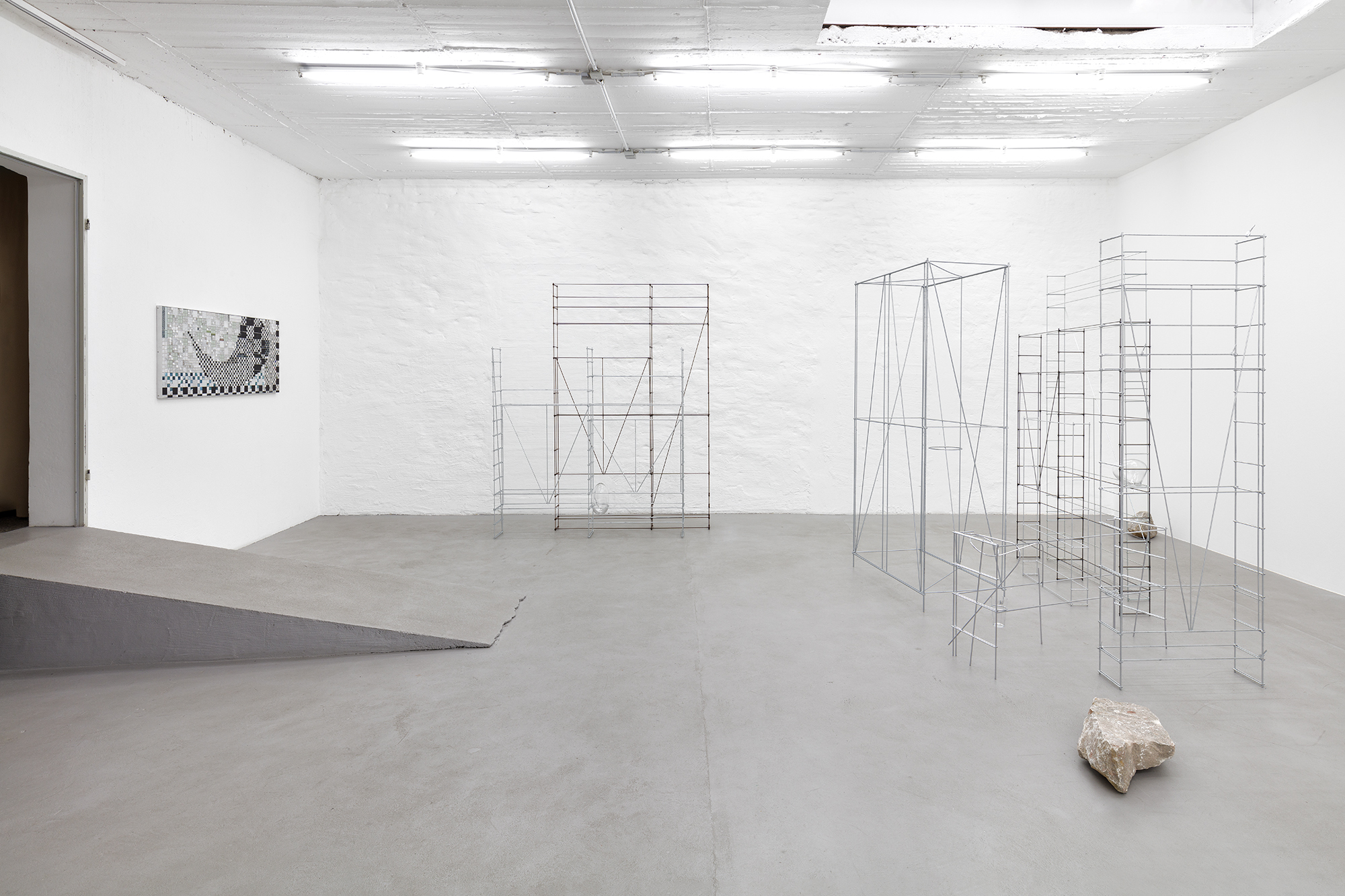
Line Lyhne, ‘A Fussiness Inside‘ Installation view
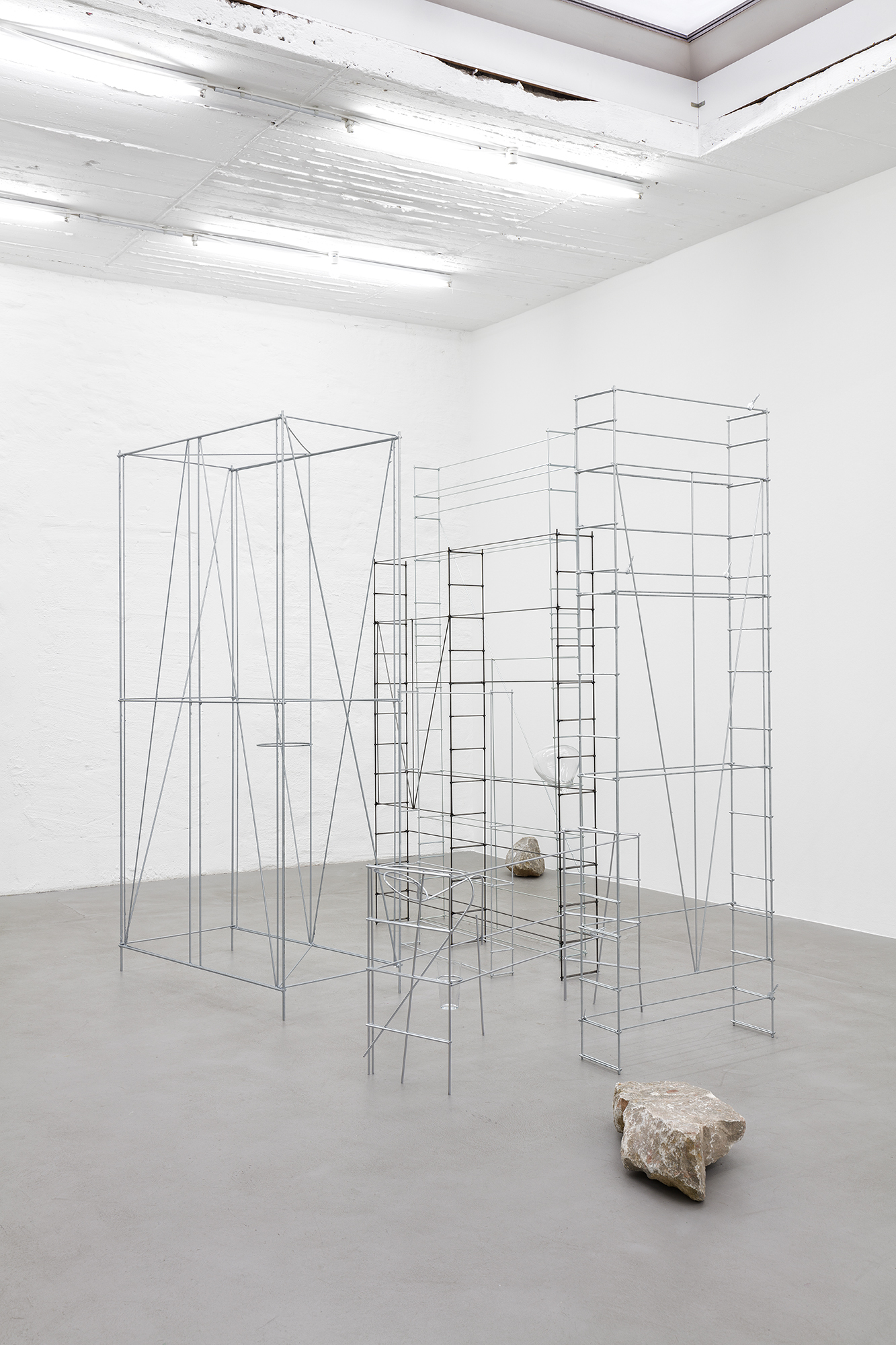
Line Lyhne ‘Bürolandschaft‘ (2024), steel, galvanisation, chrome, rust, glass, keys,

Line Lyhne ‘Bürolandschaft‘ (2024), (detail) steel, galvanisation, chrome, rust, glass, keys
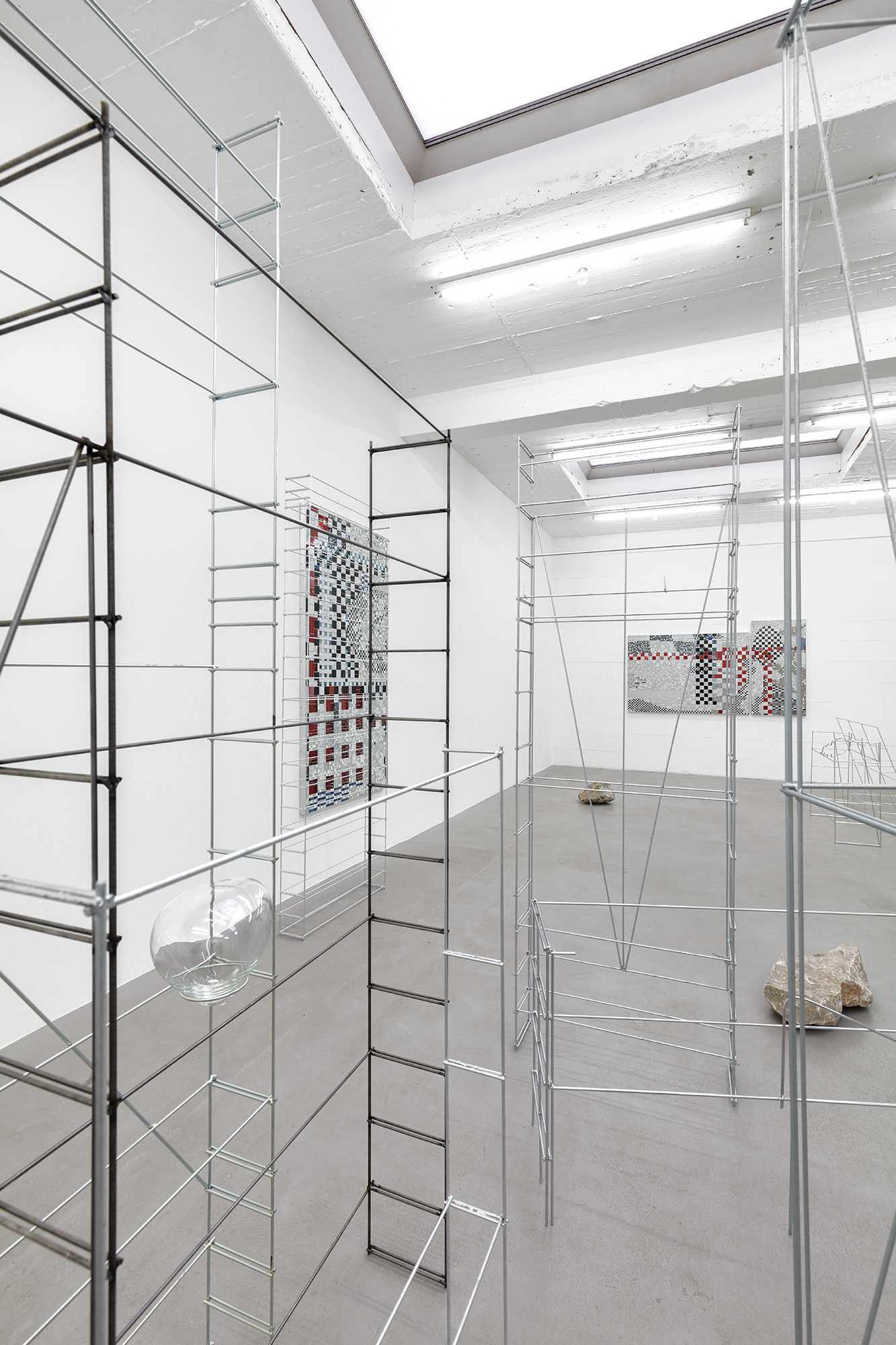
Line Lyhne, ‘A Fussiness Inside‘ Installation view
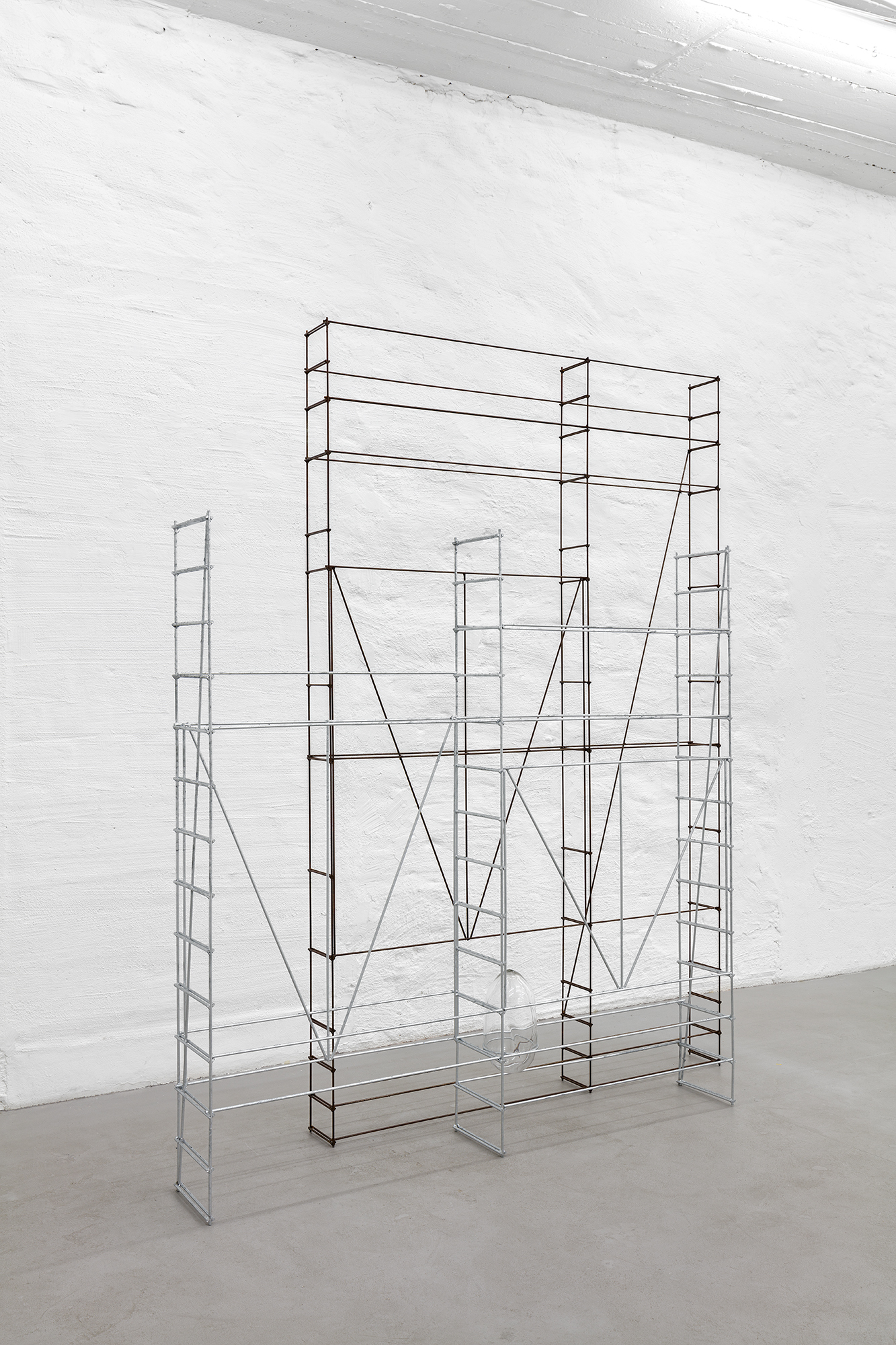
Line Lyhne ‘Bürolandschaft‘ (2023), (Fragment a) steel, galvanisation, chrome, rust, glass, keys

Line Lyhne ‘Entanglements‘ (2024) sandstone, button.
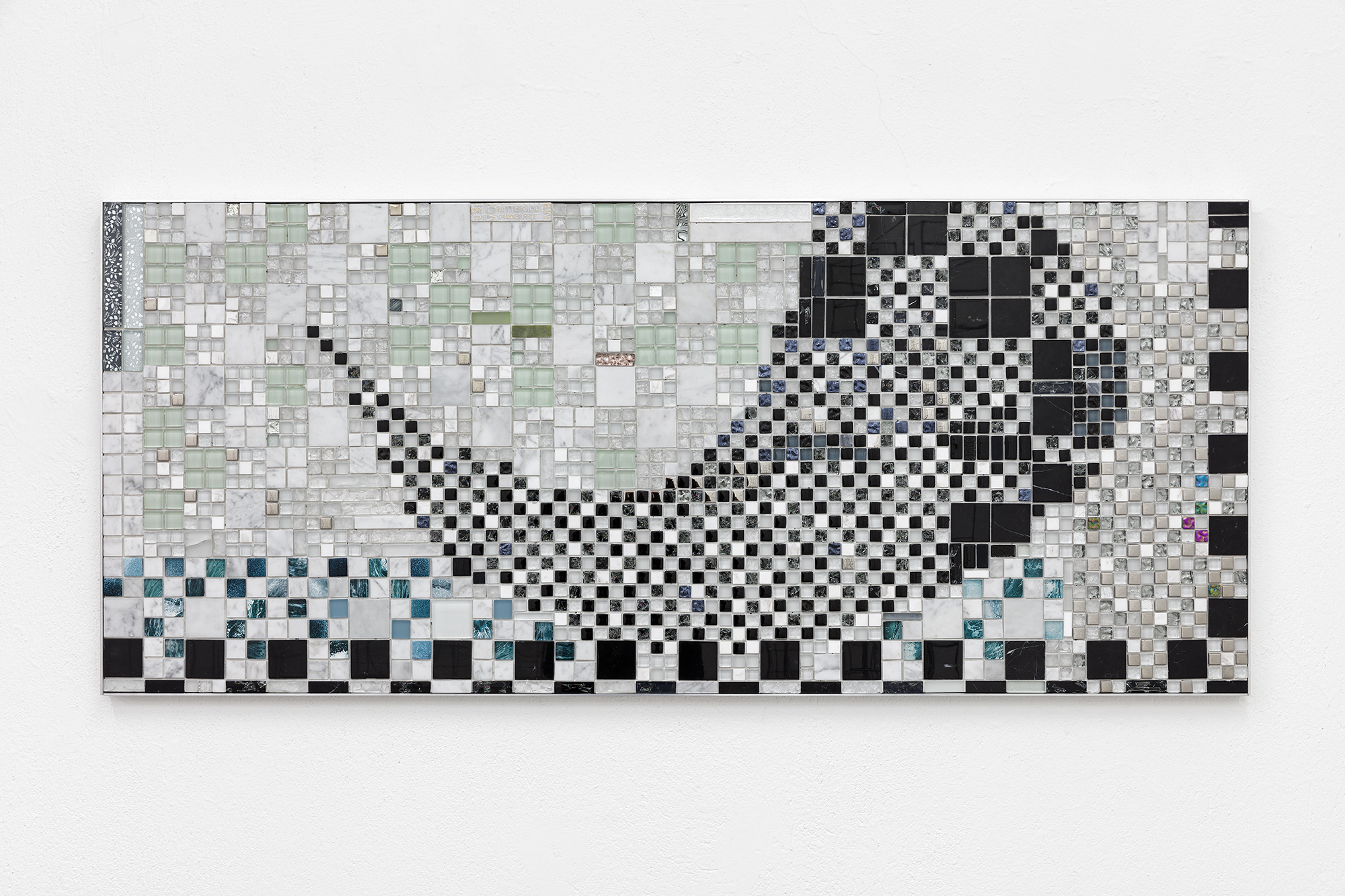
Line Lyhne ‘Sweet tooth‘ (2024) relief; mixed tiles, aluminum frame.

Line Lyhne ‘How do they feel that they were puzzled‘ (2024) relief; mixed tiles, aluminum frame.
Line Lyhne
A fussiness inside
Line Lyhne's first solo exhibition at Galerie Petra Rinck is a celebration of fussy attention to detail and care. Terms that are historically associated with artisanal production and read as feminine and allegedly inferior manufacturing processes. Industrial production, however, is considered efficient and precise. Reflecting this binary cliché, the works in A fussiness inside give the impression of being mass-produced, as if they rolled off an assembly line, yet are meticulously handcrafted. The three work groups in the exhibition trace the pervasive veilings and mystifications of capitalism and the resulting alienation of people from their products and processes. In this way, the artist encourages a critical engagement with these terms and reassigns agency back to the materials themselves.
Lyhne's work group Bürolandschaft (2023), consisting of geometrically minimalist steel sculptures, are modern ghosts from a post-Fordism past that have long since forfeited the promise of productivity, flexibility and availability. The sculptures are based on a modern, simple but highly functional design of office furniture, but are rendered non-functional at the same time. They appear as affectless shadow beings, spatial pencil drawings of their iconic predecessors. They cannot be used to sort files or categorize other objects. They give the impression of having been industrially manufactured, but are actually handmade by Lyhne. Round steel rods are welded into complex geometric bodies, all of which differ in height, width and depth and do not agree on a uniform form. The artist further individualizes each of her sculptures by integrating found objects such as keys, organic forms in the rods and handmade objects such as blown glass. The electrochemical or heat-based coatings, such as chrome plating or galvanizing, leave their marks. The artist exhibits these supposed defects and thus the process of material transformation. Bürolandschaft challenges the dualism of handmade and industrial production and opposes the common notion that industrial production is independent of workers, thus emphasizing the socio-economic perspective of industrial labour.
The artist positions her work in the concept of "Autoprogettazione" by Enzo Mari through the accessibility of construction. In 1974, the Italian designer published the first edition of "Autoprogettazione", an instruction manual for a series of easy-to-assemble furniture pieces that could be made by anyone with the simplest of tools. The manual was based on elementary building plans and provided an understanding of the basic structural components of an object, but also encouraged users to execute the projects in different ways and customize details or shapes. Without pursuing Mari's didactic approach, Lyhne’s processes critically engage with the industrial production contexts of her materials. Her sculpture is research through practice, critical understanding through making.
Making and method are also the focus of the second group of works, which comprises of tiled mosaics, of which four form two diptychs. Lyhne composes her abstract Reliefs (2024) from industrially manufactured tile slabs, which she disassembles and reassembles into her own constellations. In contrast to historical mosaics, in which the size of the individual pieces is not determined, Lyhne's compositions are based on the smallest unit, the smallest industrially producible tile - a pixel. In this way, Reliefs, like digital imagery, are created on a grid. In keeping with Rosalind Krauss's modernist grid, the artist thus creates the impression of order and lends her works a seriality through repetitive patterns, uniform structures and the possibility of reproduction. While these works have a handcrafted quality through their making, the grid in this case allows Lyhne to distance herself from personal expression to focus instead on the systematic exploration of form and space. The artist creates a sense of spatial ambiguity and permeability within the grid, despite its rigid appearance. By overlapping lines and meanings, manipulating scale and attributions, Lyhne destabilizes the viewer's perception of space and challenges conventional assumptions on notions of depth, perspective and context.
Lyhne's investigation of the social and cultural hierarchies of materials and objects, which is present in all of her works, is fleshed out in new stone sculptures. Entanglements (2024) are rough stone cuts from the quarry that become displays for small everyday objects such as keys, coins, pens and USB sticks. The artist has carved the shapes of these objects into the raw, uncut surface of the stones, so that they easily find their place, but also leave a moulded imprint in their absence. In the material encounter between stone and object, raw and finished material, their respective biographies, attributions and entanglements are revealed, merged and permeated. The stone appears as an anonymous fragment, as one among many. Its specific material properties disappear in the mass of the quarry and its personal qualities stem exclusively from the extraction industry. Its industrial origin is its only signifier. The everyday objects, on the other hand, are personally and culturally charged objects. They come from a specific household and have intimate relationships with people. They tell layered social stories of movement, purpose and emotion. By emphasizing their sociality, however, their political, economic and ecological contexts remain obscured. Lyhne complements and entangles the attributions and elisions of both parts, opening them up to alternative conceptions of matter and process and their exchange. Entanglements are material and conceptual amalgamations in which subject-object relations are reciprocal. In this way, stone and product are understood as equal parts of a global circulation of raw materials, resources and ideas.
In her work, Lyhne detaches material from its purely physical or even artistic field of reference and contextualizes it according to its non-artistic use: industry, market, circulation, extraction and labour. The artist’s acknowledgement of often hidden production contexts of the objects and materials she works with, coupled with the ambiguity she ascribes them, restores the complexity these objects and materials always had but are obscured by the capitalist mode of production. Her materials are shaped by historical, social and technological formations and developments, cultural contexts and individual perspectives. Lyhne's concept of material thus becomes permeable to external influences and generates dynamic, creative and ethical relations. Fussiness is both Lyhne’s approach and matter’s innate complexity and agency.
Lyhne's craft sensibility replaces industrial reproducibility in her work. Her work is at odds with the naivety of materials and the coherence of processes in the capitalist system. By laying her physical process bare in the works, the artist both highlights and further augments their plurality: corporeal and highly mechanical; bureaucratic and personal; private and social. They are orderly and structured, as well as playful and ambiguous. Lyhne's sensibility manifests itself physically and releases unbridled energy. She exposes the notion of high and low art forms and highlights the differences in ideologies of value and taste. It is Lyhne's very way of making that respects the vibrant character of matter and enables her to layer and intertwine complex levels of meaning.
Alke Heykes
Alke Heykes
